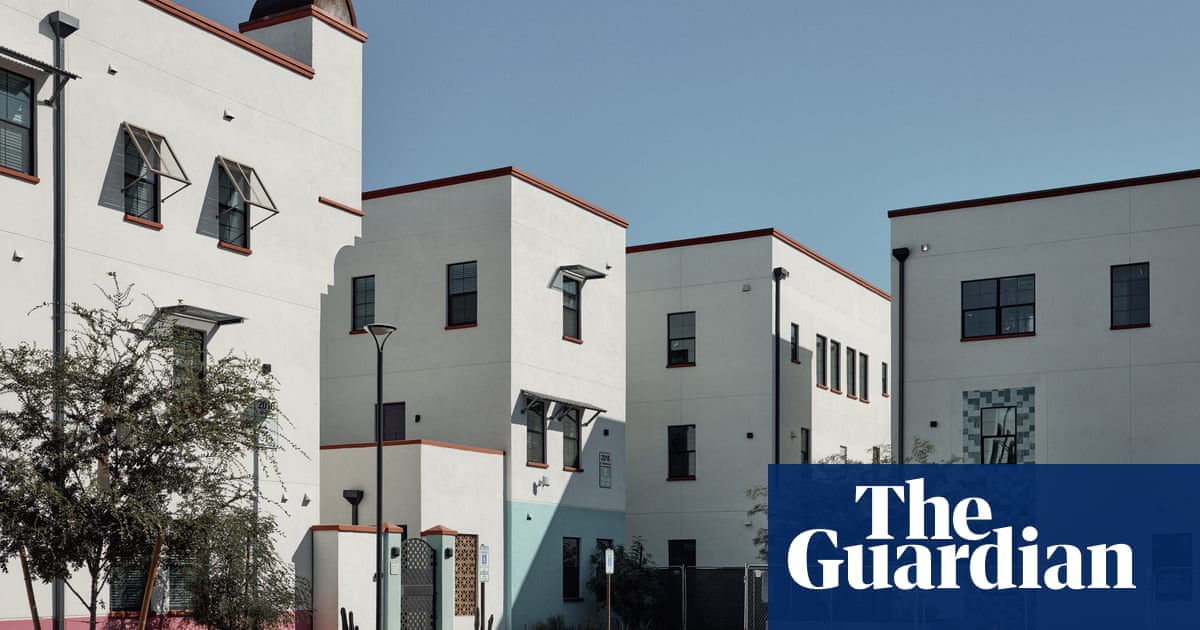This is the best summary I could come up with:
Johnson has the mien of a tech founder, with his company logo T-shirt and fashionable glasses, and was part of the founding team of OpenDoor, an online real estate business.
The development’s buildings are a Mediterranean sugar-cube white accented with ochre, and are clustered together intimately to create inviting courtyards for social gatherings and paved – not asphalt – “paseos”, a word used in Spanish-speaking parts of the US south-west to denote plazas or walkways for strolling.
There is a small car park, although only for visitors, some disgorged by Waymo, the fleet of Google-owned driverless taxis that eerily cruise around Phoenix with their large cameras and disembodied voices to reassure passengers.
To calm any nerves about making the leap to being car-free, Culdesac has struck deals to offer money off Lyft, the ride-sharing service, and free trips on the light rail that runs past the buildings, as well as on-site electric scooters.
Culdesac can be seen, then, as not only a model for more climate-friendly housing – transportation is the US’s largest source of planet-heating emissions and, studies have shown, fuels more of the pollution causing the climate crisis – but as a way of somehow stitching back together communities that have become physically, socially and politically riven, lacking a “third place” to congregate other than dislocated homes and workplaces.
Driving to places is so established as a basic norm that deviation from it can seem not only strange, as evidenced by a lack of pedestrian infrastructure that has contributed to a surge in people dying from being hit by cars in recent years, but even somewhat sinister.
The original article contains 1,476 words, the summary contains 269 words. Saved 82%. I’m a bot and I’m open source!
Don’t need to ban cars to go on a walk. These people are dumb.
A walkable neighborhood does not mean a neighborhood where you can “go for a walk”.
It’s a neighborhood where you can use walking as a form of transportation to get the things you need. Unfortunately this is impossible when the neighborhood was designed for cars. Car centered design requires large parking lots and wide roads. This causes the places people need to go to spread out in order to make room for all the car infrastructure. This puts these places outside of walking distance.
This means de-emphasizing the car is a requirement for walkability.
Urban hell. Got it.
Suburbs and rural to some extent are car centeic as well. Its a matter of packing buldings in a tighter fashion so that the distance between vital places is not long.
Think like apartment buildings and universities. Those who live near universities often opt to not drive because anything they would do often is nearby. Eat. Socialize, do some shopping, education.
I largely miss college for this reason alone
I frame it as urban heaven 🤩
I think it’s more of a fear of getting hit on a road, kinda thing. Not necessarily that they’re lazy.
Not lazy. Dumb.


